POSTMODERN FARMING
Community gardening helps queer Ugandans heal from traumaLGBTQ+ activists in Kampala are using sustainable agriculture to survive crisis and social exclusion.
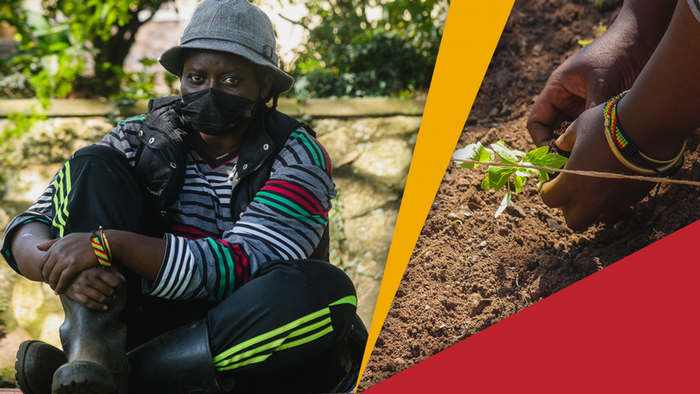
When the pandemic hit last year, Shawn Mugisha was sharing his two-bedroom apartment with nine other people. They were fellow members of Kampala's embattled queer community whom he'd met through his work as a human rights activist and paralegal — people who had been ostracized from family, or had come out of police detention with nowhere to go.
For them, lockdown presented particular problems, Shawn says: "What does 'stay at home' actually mean for someone who has no home? What does stay at home mean for someone who's doing sex work?"
Uganda first went into lockdown in April 2020, and food security quickly deteriorated. Supply chains collapsed, food prices soared and people began to go hungry. In cities like the capital Kampala, fresh produce and vegetables became particularly scarce.
Shawn, who is 34 and transgender, says that while many people in the city relied on family in rural areas to send supplies, those ostracized because of their sexual orientation or gender identity were often on their own.
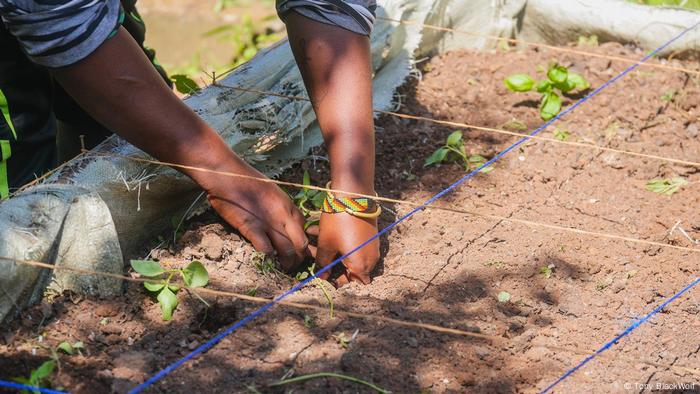
Shawn grows fruit and vegetables in the garden of a suburban apartment block
"We found ourselves waiting on the government to give us food and some of us did not get that food even in the community," he says. "So, we had to think smart, think about: how do we survive?"
He decided the answer was to grow their own fruit and vegetables in the garden of his apartment block in the suburbs. This became the start of a new organization, FAMACE, an acronym for Farming, Art, Mental Health Advocacy, Collaboration, and Ethical human-centered design. Its goal is to use sustainable agriculture to boost the resilience of Uganda's queer community and help victims of abuse and discrimination to help themselves.
Having studied permaculture, Shawn believes sustainable food production can help victims of discrimination and abuse heal from trauma and build a life that isn't dependent on activities like sex work that could land them back in police hands. "Ethical human-centered design is really putting you at the center of solving your own problems and looking at the history of these problems," he explains.
Uganda's LBGTQ community faces violence and arrest
Uganda is a hostile place for its LGBTQ+ community. In 2019, gay rights activist and paralegal Brian Wasswa was brutally murdered in his house in what human rights campaigners say was a hate crime, reminiscent of the 2011 murder of David Kato.
Kato, also a gay rights activist, was bludgeoned to death after winning a case against a local newspaper that had named him among homosexuals under the headline "hang them."

Some Ugandans have fled the country to avoid discrimination
In 2014, parliament passed the Anti-Homosexuality Act. It was later declared unconstitutional by Uganda's Constitutional Court. But in May, the country's parliament approved a sexual offences bill, which, among other things, criminalized same-sex relations with a punishment of up to five years in prison.
Earlier this month, the President Yoweri Museveni said he would not sign the bill. But Florence Kyohangirwe, sexual minorities editor at Minority Africa, says the government even debating this kind of legislation legitimizes homophobia and is "sort of an endorsement to harass the LGBTQ community."
And activists say the pandemic itself has been used as a pretext for harassment, with police raiding LGBTQ+ homeless shelters and arresting people for engaging in acts likely to spread COVID-19.
Using gardening to heal trauma
In June, police raided an LGBTQ+ shelter on the outskirts of Kampala and arrested 44 people allegedly participating in a "same-sex wedding" for "spreading disease" — without specifying whether they meant COVID.
Shawn, who has worked as a paralegal and for several human rights NGOs, helped to secure their release. But he says that once free, LBGTQ+ people who have been persecuted by the state go to shelters where help is limited to providing for basic needs.
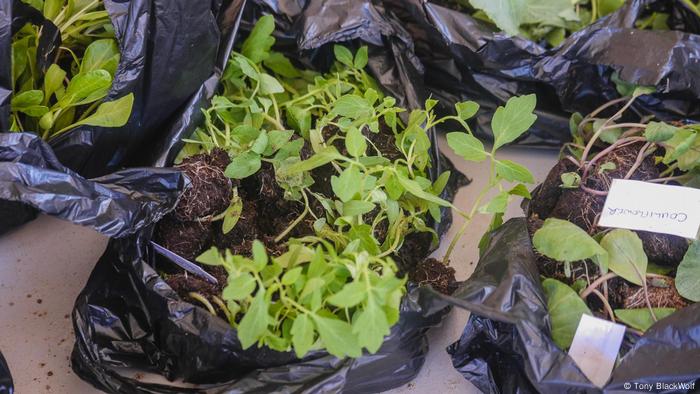
Shawn would like to integrate community gardens into shelters across Uganda
"Every time I was like, why don't we find a sustainable solution for this person's problem?" he says. "A lot of dignity is taken from the people who access these spaces. You're given basic accommodation, which is a blanket and maybe a mosquito net, and maybe one meal a day."
With FAMACE, Shawn would like to integrate community gardens into shelters across Uganda. For one thing, they could offer a better diet — which is particularly important for those on medications such as HIV prophylaxis. But nurturing plants could provide mental as well as physical health benefits.
Tumukunde* ran away from home to live with Shawn after being forced to marry a pastor because her family suspected she was gay. For her, the garden was a place of solace to heal.
"It was also more comforting for me because, during that time, I was going through a lot," she says. "And maybe I needed something that was less human. I didn't want to talk to anyone, I just always wanted to be by myself."
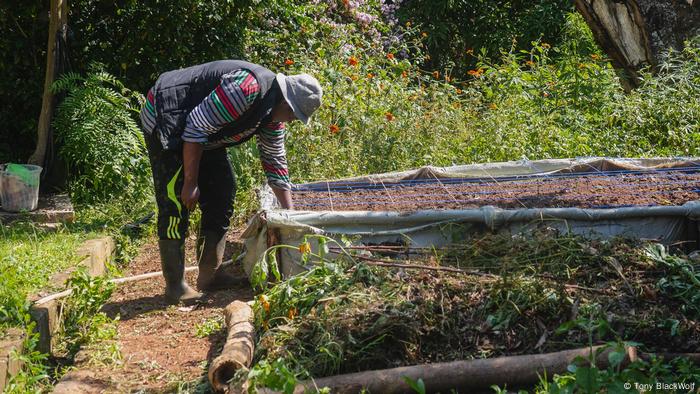
Shawn believes sustainable food production can help victims of discrimination and abuse
In January, the group was "randomly evicted" from Shawn's apartment — "just because we're queer," he says. Shawn moved into a large shared duplex nestled in a private compound filled with flowers and chirping birds and established a new vegetable garden there. Here, he can only support one person living in, and will have to move out by September. But for now, the garden is bearing fruit.
And for 39-year-old Charles*, it has brought a kind of peace. Charles moved in with Shawn after he was outed for downloading gay porn and ostracized from his community. He has survived three attempts on his life.
"It's quiet and I get to be invisible," Charles says of the garden, his eyes glassy with tears. "I think about life, I think about my choices... Gardening gives you ownership of something, control over something at least. There are aspects of my life I can't control, but with gardening, I can do that."
Watch video05:33
Uganda: Living in fear
Homegrown solutions
So far, FAMACE has supported five people. Shawn talks excitedly about plans for a queer eco-village, and how the ethics and principles of permaculture and ecofriendly agriculture might be integrated into projects for social change.
For now, he is struggling to find money to rent permanent premises. So far, he says the project has produced enough food for those immediately involved. With enough space, he would like to increase production and start selling some of the food at local markets. But he also sees potential in donating FAMACE's produce to help families in need.
"We live in a society where once you have any sort of contribution you give towards the community you have social protection," he says. "I think it's time we start relying on our own homegrown solutions to fight marginalization and discrimination." Particularly in urban areas where food is scarce, "it's something that we can use as an approach to advocacy and creating more social inclusion."
*Names have been changed on request for safety reasons
Could high-tech Netherlands-style farming feed the world?
As the global population swells, so does the need for food. Could a Netherlands approach to farming that doesn't rely on soil, sunshine, water and pesticides be the answer?

The small, overcrowded, low-lying Netherlands might not sound like the answer to feeding a world whose population is predicted to rise to 9.6 billion people by 2050, but farmers and agronomists there would beg to differ.
The country known best globally for its traditional tulips and wooden footwear, is the second largest vegetable exporter in the world — with exports totalling €6 billion annually. Onions, potatoes and some southern climate vegetables such as tomatoes, peppers and chiles are among its top selling products.
The Netherlands is growing them with far less water and pesticides than if production was happening in the soil or open air.
They do it using greenhouse technology, termed 'precision farming', that some in the Dutch food industry claim is the most advanced in the world.
An old technology modernized
Modern greenhouse farming took off in the country after World War II as a reaction to one of Europe's last experiences of famine. Up to 20,000 people died in the "Dutch hunger winter", during the last months of the German occupation.
Nowadays, the most advanced part of the country's greenhouse technology is in the southern region of Westland, where 80 percent of cultivated land is under glass.
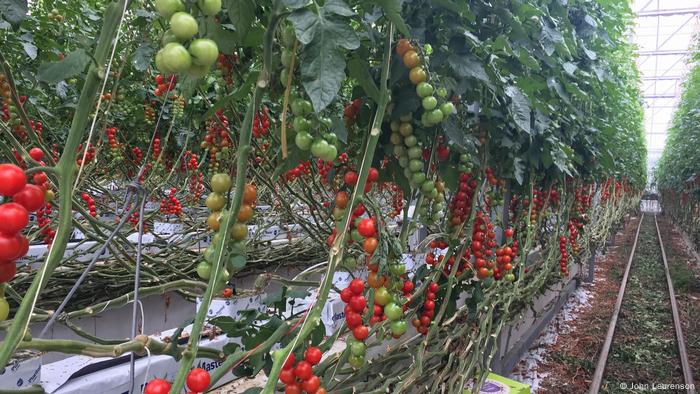
In the Dutch farming region of Westland, farmers tend to grown tomatoes in bags rather than soil
In the vast high-tech greenhouses of sustainable producers Duijvestijn Tomatoes, vines drip with red, yellow, green and dark purple fruit. In these highly controlled spaces, visitors are required to wear hygiene overalls.
"In the end, the plant is around 13 to 14 metres (42.7 feet to 45.9 feet) long and will produce about 33 clusters of tomatoes," Ad van Adrichem, general manager at Duijvestijn Tomatoes told DW.
Reaching such heights is important in a country where land is as precious as it is scarce: the tiny Netherlands has one of the highest population densities in the world. In the greenhouses of Westland, an area that was reclaimed at great cost and effort from the sea, they grow almost 70 kilograms (154 pounds) of tomatoes per square meter.
That's at least 10 times the average yield from an open field in Spain or Morocco, but with eight times less water and practically no chemical pesticides.
Alternative thinking
The secret to the success is that Dutch tomatoes are grown in small bags of mineral wool — a fibrous material that can also be used for insulation and soundproofing.
"It gives you far more control," said van Adrichem. "So we can steer very precisely the amount of nutrition we need and the amount of water we need."
But that's not all that's at play. There are also the greenhouses themselves. Duijvestijn Tomatoes has invested in a revolutionary double-glass roof which conserves more heat and, thanks to special coatings, diffuses the light that gets through, thereby making sure it also reaches the plants' lower leaves.
The constant warm temperature comes from two geothermal wells. The level of CO2 gas on which the plants thrive, is doubled in the air inside the greenhouse, carefully piped in from the local oil refinery. LED lights inside these state of the art stuctures allow the crops to keep growing into the night.

Instead of using pesticides, Duijvestijn Tomatoes unleashes insects in a box to deal with pests
The water used is all pure Dutch rain, captured and stored in an underground layer of sand for use through the dry months. Whenever pests appear, they bring in insects to eat them.
They even have cardboard hives of bees on hand for pollination.
Yet some ecologists are skeptical of the new technology. Herman van Bekkem, campaign leader for Greenpeace Holland, is one of them.
"We indeed see promising examples of farmers doing their best to reduce pesticides," he told DW. "But if you look at the facts, like the statistics for water pollution in the Netherlands, there is no other region more polluted by pesticides than the greenhouse region."
He says water managers in Westland have been complaining about the high amounts of pesticides in surface water for many years.
"Not from us." said van Adrichem. "We work with a closed water circuit. We give the plants the exact amount of water they need and because the tomatoes aren't planted in the soil, there is no run-off."
A vertical future
Leo Marcelis, horticulture professor at Wageningen University and Research (WUR), the research hub for the Dutch food industry, says vertical farms are the way forward.
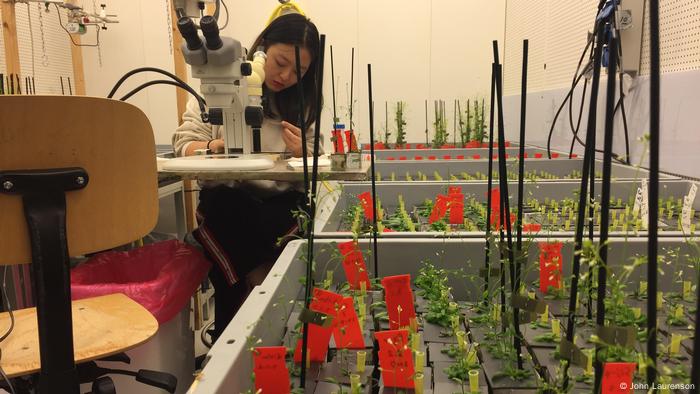
Students from around the world are researching future farming methods at WUR
"In the future, we'll have vertical farms that will go as high as tall buildings that will only use artificial light," said Marcelis. With units built on top of each other as high as you like, with only artificial light and where farming will be completely independent of the climate and completely reliable, he adds.
Half the students at WUR are from abroad, and when they finish their studies, many will be taking this new science home to countries in Asia and Africa. WUR Plant Sciences Group managing director Ernst van den Ende describes a project he is working on in Africa that optimizes the symbiosis between beans and a bacterium that is able to fix nitrogen — a key plant nutrient — from the air.
Read more: From grey to green: Urban farming around the world
"By optimizing this symbiosis, we are able to increase yields without using fertilizers," said van den Ende.
For him, WUR's research is about stopping people going hungry, as his grandparents' generation did in the Netherlands.
"My grandmother would travel 80 kilometers for a sack of brussel sprouts," he said. Now van den Ende believes the technology the Dutch are developing will, in years to come, be able to feed the world.
As the global population swells, so does the need for food. Could a Netherlands approach to farming that doesn't rely on soil, sunshine, water and pesticides be the answer?

The small, overcrowded, low-lying Netherlands might not sound like the answer to feeding a world whose population is predicted to rise to 9.6 billion people by 2050, but farmers and agronomists there would beg to differ.
The country known best globally for its traditional tulips and wooden footwear, is the second largest vegetable exporter in the world — with exports totalling €6 billion annually. Onions, potatoes and some southern climate vegetables such as tomatoes, peppers and chiles are among its top selling products.
The Netherlands is growing them with far less water and pesticides than if production was happening in the soil or open air.
They do it using greenhouse technology, termed 'precision farming', that some in the Dutch food industry claim is the most advanced in the world.
An old technology modernized
Modern greenhouse farming took off in the country after World War II as a reaction to one of Europe's last experiences of famine. Up to 20,000 people died in the "Dutch hunger winter", during the last months of the German occupation.
Nowadays, the most advanced part of the country's greenhouse technology is in the southern region of Westland, where 80 percent of cultivated land is under glass.

In the Dutch farming region of Westland, farmers tend to grown tomatoes in bags rather than soil
In the vast high-tech greenhouses of sustainable producers Duijvestijn Tomatoes, vines drip with red, yellow, green and dark purple fruit. In these highly controlled spaces, visitors are required to wear hygiene overalls.
"In the end, the plant is around 13 to 14 metres (42.7 feet to 45.9 feet) long and will produce about 33 clusters of tomatoes," Ad van Adrichem, general manager at Duijvestijn Tomatoes told DW.
Reaching such heights is important in a country where land is as precious as it is scarce: the tiny Netherlands has one of the highest population densities in the world. In the greenhouses of Westland, an area that was reclaimed at great cost and effort from the sea, they grow almost 70 kilograms (154 pounds) of tomatoes per square meter.
That's at least 10 times the average yield from an open field in Spain or Morocco, but with eight times less water and practically no chemical pesticides.
Alternative thinking
The secret to the success is that Dutch tomatoes are grown in small bags of mineral wool — a fibrous material that can also be used for insulation and soundproofing.
"It gives you far more control," said van Adrichem. "So we can steer very precisely the amount of nutrition we need and the amount of water we need."
But that's not all that's at play. There are also the greenhouses themselves. Duijvestijn Tomatoes has invested in a revolutionary double-glass roof which conserves more heat and, thanks to special coatings, diffuses the light that gets through, thereby making sure it also reaches the plants' lower leaves.
The constant warm temperature comes from two geothermal wells. The level of CO2 gas on which the plants thrive, is doubled in the air inside the greenhouse, carefully piped in from the local oil refinery. LED lights inside these state of the art stuctures allow the crops to keep growing into the night.

Instead of using pesticides, Duijvestijn Tomatoes unleashes insects in a box to deal with pests
The water used is all pure Dutch rain, captured and stored in an underground layer of sand for use through the dry months. Whenever pests appear, they bring in insects to eat them.
They even have cardboard hives of bees on hand for pollination.
Yet some ecologists are skeptical of the new technology. Herman van Bekkem, campaign leader for Greenpeace Holland, is one of them.
"We indeed see promising examples of farmers doing their best to reduce pesticides," he told DW. "But if you look at the facts, like the statistics for water pollution in the Netherlands, there is no other region more polluted by pesticides than the greenhouse region."
He says water managers in Westland have been complaining about the high amounts of pesticides in surface water for many years.
"Not from us." said van Adrichem. "We work with a closed water circuit. We give the plants the exact amount of water they need and because the tomatoes aren't planted in the soil, there is no run-off."
A vertical future
Leo Marcelis, horticulture professor at Wageningen University and Research (WUR), the research hub for the Dutch food industry, says vertical farms are the way forward.

Students from around the world are researching future farming methods at WUR
"In the future, we'll have vertical farms that will go as high as tall buildings that will only use artificial light," said Marcelis. With units built on top of each other as high as you like, with only artificial light and where farming will be completely independent of the climate and completely reliable, he adds.
Half the students at WUR are from abroad, and when they finish their studies, many will be taking this new science home to countries in Asia and Africa. WUR Plant Sciences Group managing director Ernst van den Ende describes a project he is working on in Africa that optimizes the symbiosis between beans and a bacterium that is able to fix nitrogen — a key plant nutrient — from the air.
Read more: From grey to green: Urban farming around the world
"By optimizing this symbiosis, we are able to increase yields without using fertilizers," said van den Ende.
For him, WUR's research is about stopping people going hungry, as his grandparents' generation did in the Netherlands.
"My grandmother would travel 80 kilometers for a sack of brussel sprouts," he said. Now van den Ende believes the technology the Dutch are developing will, in years to come, be able to feed the world.
FEEDING THE WORLD OF THE FUTURE: IS HYDROPONICS THE ANSWER?Tackling food insecurity with hydroponicsThe challenge of feeding a planet that’s set to have 3 billion more people on it by 2050 - made even more acute by climate change as some parts of the planet become wetter, while others drier - means the pressure is on to find ways to feed the planet. So farming has to become more productive – and new areas to grow, especially in dry climates, must be found. One potential solution: hydroponics.
These two farming methods can feed the planet and help the environment — but they need to get along
Special to Financial Post© Provided by Financial Post Small-scale farmers and large agri-food corporations are adopting regenerative agriculture, an approach to farming that reverses climate change by building up soil-bound organic matter.
The planet’s farmers are struggling. Extreme heat, record droughts, and massive floods show the challenges from climate change piling up. There is also an elephant in the room; top-tier journal Nature: Food just estimated that a third of global greenhouse gas emissions come from the farming sector. This isn’t a surprise; Nine years ago, a similar article also estimated this number at one third. Almost a decade has passed, little has changed.
Despite consensus on the seriousness of the situation, there is only disagreement around solutions. On one side is the idea that small-scale farming, seasonal production, and few or no chemical inputs equal a sustainable farming system. Others point out that since intensive greenhouses, vertical farms and food science can produce more food with less impact, we should embrace a “high-technology” approach. As this debate rages, experts and policy makers become polarized, stalling progress. We fiddle while the fields burn.
The truth will not please the purists. Alone, neither small-scale nor high tech can solve agriculture’s part in the climate crisis. But working together, sustainable food systems are possible.
Members of the small-scale farming community often promote “regenerative” agriculture, an approach to farming that reverses climate change by building up soil-bound organic matter. This is important because organic matter absorbs carbon dioxide, mitigating climate change. In addition, organic matter in the soil acts like a sponge, absorbing water when it is abundant and storing moisture for when it is scarce. Organic matter provides a habitat for beneficial microbes. Fields rich with organic matter do better during droughts and need less fertilizers. Industrial farming is seen as the antithesis of regenerative farming because it requires a lot of chemical inputs and relies on ploughing and tilling that break down organic matter, all the while producing a very limited number of crops (usually corn, soy, canola, and wheat in Canada). In contrast, regenerative agriculture uses complex crop rotations, keeps the soil relatively undisturbed, and uses cover crops to prevent erosion.
Today’s regenerative farming management systems use modern tools to enact practices that were common a hundred years ago and are finding their way back into the mainstream once again. Small-scale farmers and large agri-food corporations alike are adopting regenerative agriculture and wherever there are fields tilled by tractors there can be immense benefit to adopting such approaches to improve soil health. Regenerative agriculture’s proponents are onto something. However, it is not a complete solution. For one thing, most regenerative agricultural systems would see livestock moved out of intensive operations and into lower-density pasture-based systems. If this shift happens, livestock products may become more expensive as we will likely produce less animal protein per acre.
Those in favour of “high-technology” argue we should adopt innovations including vertical farms where a huge amount of food is produced in buildings that occupy a tiny amount of land. Vertical farms use artificial lighting and carefully designed growth media to produce year-round fruits and veggies for local consumers. Usually, these facilities are located within or next to cities where the producers ship fresh. While Canada has a longstanding, financially viable greenhouse industry that already produces tomatoes, cucumbers, and peppers year-round, the newest generation of technology makes lettuce, microgreens and even strawberries or blueberries possible. Progress is so rapid that it is plausible to imagine even a country like Canada becoming food secure for these crops within a handful of years, despite our winters.
Like adopting regenerative farming, technologies such as vertical farming will pay massive sustainability dividends. Our country depends on importing billions of dollars of fresh fruits and vegetables that come from industrial farms in California. These farms not only cause serious water pollution as pesticides run off fields but are also vulnerable to droughts that threaten the long-term supply of our imports. Done properly, a vibrant vertical farming industry in Canada could reduce our dependency on precarious and highly polluting imports while simultaneously creating new jobs for Canadians in the innovation economy.© Karim Sahib/AFP via Getty ImagesVertical farms use artificial lighting and carefully designed growth media to produce year-round fruits and veggies for local consumers.
Meanwhile, producing non-animal protein could create another big windfall. These “alternative” proteins include plant-based products that may come from leguminous crops (such as peas or soybeans) all the way to more space-age sounding cellular agriculture that involves growing proteins in large tanks. This is an area where Canada should excel. Our grains and pulses can be converted directly into protein-rich ingredients thus fuelling the explosion of alternative protein products that are already arriving on grocery store shelves. And if governments are smart, they will encourage agri-tech entrepreneurs who are working to brew proteins in bioreactors to set up shop in urban Canada. Not only will this help lower our carbon footprint, it will also make up some of the deficit if animal production shifts towards a more regenerative model.
‘You’re sitting on your own fuel source’: How the harvest from hell and carbon tax is pushing farmers to greener fuel
Canada cannot afford to choose sides in a false either-or debate. We must embrace both regenerative and high technology. Regenerative agriculture provides a framework to transform land-based agriculture into a key strategy for protecting the environment. Vertical farming and other agricultural technology solutions are ideally suited to producing healthy foods year-round within or adjacent to urban areas.
Just like an investment banker would recommend a diversified investment strategy to protect a client’s retirement fund, so too should food systems planners embrace a portfolio of mutually supporting strategies. Only by adopting diverse approaches will we be able to address our immense environmental challenges, while also positioning the Canadian agri-food industry to be an engine of sustainable economic growth. But first, the two sides need to learn to talk with each other.
Evan Fraser is the Director of Arrell Food Institute at the University of Guelph; Lenore Newman is the Director of the Food and Agriculture Institute at the University of the Fraser Valley.
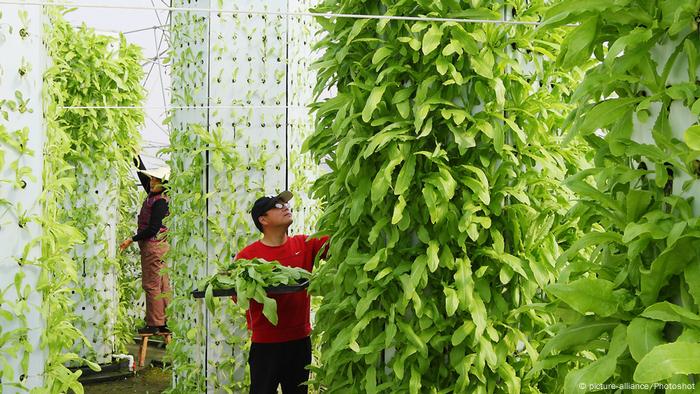


No comments:
Post a Comment